Bartolomeo Colleoni: Most Respected Mercenary General Of The 15th Century Italy
A. Sutherland - AncientPages.com - From the late Middle Ages until the mid-17th century, Italy was widely known for employing mercenary leaders – condottieri.
In his book "Mercenary Companies and the Decline of Siena", William Caferro wrote:
 Statue of Bartolomeo Colleoni. Andrea Verrocchio (1435–1488). Image credit: Novellón - CC BY-SA 4.0
Statue of Bartolomeo Colleoni. Andrea Verrocchio (1435–1488). Image credit: Novellón - CC BY-SA 4.0
"Of the many calamities that befell Europe in the fourteenth century, there was none worse than the raids of the great mercenary companies. Composed of professional soldiers, restless knights, and assorted adventurers from all over Europe, the companies were private armies, available for hire to the highest bidder.
They fought in France in the battles of the Hundred Years' War, in Spain...and in wars in German lands. When not fighting, they sustained themselves by raiding cities and towns with which they did not quarrel, plundering the countryside, and extorting money from local governments... The contemporary French chronicler Jean de Venette called them "men with no right and no reason other than their passion, iniquity, malice, and hope of gain..."
In the fourteenth century, one of the most famous figures was Sir John Hawkwood (c.1323–1394) or "John Sharp," a fourteenth-century English soldier and condottiero, whose achievements made him a man shrouded in myth in both England and Italy.
Another one was Bartolomeo Colleoni (1400 - 1475)', an Italian mercenary and one of the most prominent Italian commanders in the 15th century. He was well-known for his fidelity and solidity among the mercenaries; he was also a great patron of artists.
Turbulent Childhood And Youth Of Bartolomeo
Bartolomeo Colleoni was born in a castle in Solza near Bergamo, located about 300 km from Venice, northern Italy.
When he was nine years old, his father, a local nobleman known for his cruel nature, was stabbed in a dispute by his cousin Giovanni, not far from home, at the castle of Trezzo d'Adda. He lived with his mother and servants in a looted castle from then on.
At 14, he began serving as a bollard at the court of Philippe Arcelli of Piacenza; he never returned to Solza. He learned martial art from soldiers until he formed his infantry and cavalry unit to fight as a mercenary who would pay more.
 The equestrian statue of Bartolomeo Colleoni by Verrocchio in Venice. Image credit: Didier Descouens - CC BY-SA 4.0
The equestrian statue of Bartolomeo Colleoni by Verrocchio in Venice. Image credit: Didier Descouens - CC BY-SA 4.0
In the first half of the fifteenth century, Venice began to subordinate the adjacent areas of north-eastern Italy, growing to challenge its long-lasting rival – Milan.
Italy was, moreover, divided into several small kingdoms or urban republics waging endless wars and often changing alliances. These numerous wars demanded the participation of professionals, both mercenary soldiers and their military leaders - 'condottieri.'
On his first major expedition, Colleoni set off to central and southern Italy in 1418 under the command of Braccia da Montone, one of the greatest of the condottieri who dominated Italian history in the 14th and 15th centuries. Then he continued to train as a soldier, taught art and tactics of war, and entered the service of various condottieri, participating in several campaigns.
His specialty was fighting in the mountains.
Colleoni Enters Direct Service Of The Venetian Republic
An important turning point in Colleoni's life and career came when he entered the service of Francesco Bussone (called "Count of Carmagnola")' who, despite his successes, also made some 'mistakes.' There was evidence that he wanted to change the front plotting against Venice. Carmagnola was seized, imprisoned, and brought to trial for treason against the republic. Sentenced to death, he was beheaded in Venice on May 5, 1432.
Colleoni, on the other hand, entered the direct service of the Venetian Republic, which represented the crucial phase of his career.
He recaptured many towns and districts for Venice from the Milanese and, for a long time, continued to serve the Venetians and win battles at Brescia, Verona, and on the Lake of Garda.
Malpaga Castle And Many Good Deeds
In 1456, the famous Captain-General of the Venice Republic Bartolomeo Colleoni decided to buy Malpaga's Borough 100 gold ducats, aiming to turn it into his private house and the center of his domain. His formidable castle at Malpaga was both beautifully decorated with frescoes and fortified. It became the Commander's headquarters and witnessed numerous outstanding historical events, hosting renowned figures including Charles II, Duke of Burgundy, and Christian I, king of Denmark.
Like many others, Colleoni also changed sides. However, no act of treachery is attributed to him, nor did he subject the territories he passed through to the rapine and robbery so often practiced by other soldiers of fortune.
He participated in many military encounters and led troops to many victories, which helped him to gain international fame and fame that other Italian commanders at the time could undoubtedly envy him.
Involvement In Charity And Agricultural Improvements
When not fighting, Colleoni devoted his time to introducing agricultural developments on the vast estates which the Venetians had granted him and to charity.
In 1466, Bartolomeo founded an institution in Bergamo that works to this day to support girls from low-income families. Having many illegitimate children, he used to give dowries to young girls who wanted to marry.
In the 15th century, Italy was the site of political attacks and murders, poisonings, and betrayals. Maybe, for fear of assassins, Colleoni's bedroom had no fireplace through which the bombers could enter the room. He was safe there. His Malpaga Castle was protected by a wide moat and built as a highly inaccessible fortress.
It was able to resist multiple attacks and battles.
When Venice was at peace, Colleoni remained at the disposal of the republic in times of war until his death. After being Venetian captain-general for twenty years, he died on July 3, 1475.
'He who serves a republic serves no one' was one of many epitaphs written in memory of Colleoni.
Written by - A. Sutherland - AncientPages.com Senior Staff Writer
Copyright © AncientPages.com All rights reserved. This material may not be published, broadcast, rewritten or redistributed in whole or part without the express written permission of AncientPages.com
Expand for referencesReferences:
Urban W. Medieval Mercenaries
Mallett, Michael. Mercenaries and their Masters
More From Ancient Pages
-
 Drought Was Not The Reason Cahokia, North America’s First City Was Suddenly Abandoned – New Study
Archaeology | Jul 4, 2024
Drought Was Not The Reason Cahokia, North America’s First City Was Suddenly Abandoned – New Study
Archaeology | Jul 4, 2024 -
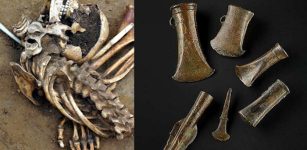 DNA Study Sheds New Light On Ancient Britain’s Language, Ancestry, Kinship, Milk
Archaeology | Dec 26, 2021
DNA Study Sheds New Light On Ancient Britain’s Language, Ancestry, Kinship, Milk
Archaeology | Dec 26, 2021 -
 Enigmatic Underground Iron Age Monument At Navan Fort And Its Connection To The Ulster Kings Investigated
Archaeology | Aug 24, 2023
Enigmatic Underground Iron Age Monument At Navan Fort And Its Connection To The Ulster Kings Investigated
Archaeology | Aug 24, 2023 -
 500-Year-Old Transylvanian Diaries Reveal How The Little Ice Age Transformed Life And Death In The Region
Archaeology | Feb 12, 2025
500-Year-Old Transylvanian Diaries Reveal How The Little Ice Age Transformed Life And Death In The Region
Archaeology | Feb 12, 2025 -
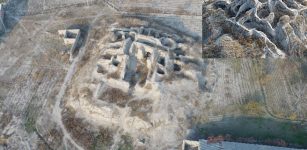 Sogdian Temple Of Jartepa II On Caravan Road Of The Silk Road
News | Sep 3, 2020
Sogdian Temple Of Jartepa II On Caravan Road Of The Silk Road
News | Sep 3, 2020 -
 Remarkable Neanderthal Flute Found In Divje Babe Cave Is The World’s Oldest Musical Instrument
Artifacts | Dec 11, 2023
Remarkable Neanderthal Flute Found In Divje Babe Cave Is The World’s Oldest Musical Instrument
Artifacts | Dec 11, 2023 -
 Incredible Discovery Of A Poem By Virgil On A Roman Oil Amphora
Archaeology | Jun 21, 2023
Incredible Discovery Of A Poem By Virgil On A Roman Oil Amphora
Archaeology | Jun 21, 2023 -
 Yuezhi Civilization: Ancient Nomadic People Who Once Ruled Bactria
Civilizations | Nov 29, 2018
Yuezhi Civilization: Ancient Nomadic People Who Once Ruled Bactria
Civilizations | Nov 29, 2018 -
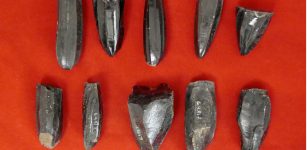 Mayas Utilized Market-Based Economics – New Study
Archaeology | Jan 6, 2023
Mayas Utilized Market-Based Economics – New Study
Archaeology | Jan 6, 2023 -
 Seppuku: Ancient Suicide Ritual That Guaranteed Honorable Death Instead For Life In Shame
Ancient Traditions And Customs | Mar 8, 2018
Seppuku: Ancient Suicide Ritual That Guaranteed Honorable Death Instead For Life In Shame
Ancient Traditions And Customs | Mar 8, 2018 -
 Dzibilchaltún: One Of The Most Ancient Mayan Centers In Northwest Yucatan, Mexico
Civilizations | Feb 2, 2016
Dzibilchaltún: One Of The Most Ancient Mayan Centers In Northwest Yucatan, Mexico
Civilizations | Feb 2, 2016 -
 Exceptionally Long-Lived Ancient Form Of Hydraulic Engineering Unearthed In The Nile Valley
Archaeology | Jun 13, 2023
Exceptionally Long-Lived Ancient Form Of Hydraulic Engineering Unearthed In The Nile Valley
Archaeology | Jun 13, 2023 -
 Ancient City Of Gordium, Gordian Knot And Skeleton In Tumulus Of King Midas
Civilizations | Sep 20, 2018
Ancient City Of Gordium, Gordian Knot And Skeleton In Tumulus Of King Midas
Civilizations | Sep 20, 2018 -
 Science Unravels Some Secrets Of Mysterious Shipwreck Gribshunden
Archaeology | Sep 17, 2022
Science Unravels Some Secrets Of Mysterious Shipwreck Gribshunden
Archaeology | Sep 17, 2022 -
 Aboriginal Art And Knowledge Unlocks Mystery Of Fairy Circles
Archaeology | Apr 5, 2023
Aboriginal Art And Knowledge Unlocks Mystery Of Fairy Circles
Archaeology | Apr 5, 2023 -
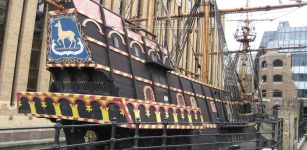 On This Day In History: Sir Francis Drake Sets Sail On His Round-The-World Voyage – On Dec 13, 1577
News | Dec 13, 2016
On This Day In History: Sir Francis Drake Sets Sail On His Round-The-World Voyage – On Dec 13, 1577
News | Dec 13, 2016 -
 Dispute Between Russia And Poland Over Discovery Of Czarist Officer’s Corpse In Turkey
Archaeology | Apr 10, 2018
Dispute Between Russia And Poland Over Discovery Of Czarist Officer’s Corpse In Turkey
Archaeology | Apr 10, 2018 -
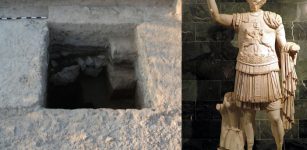 Unfinished Roman Aqueduct Discovered In The Hellenistic Royal City Of Artashat-Artaxata In Ancient Armenia
Archaeology | Nov 16, 2021
Unfinished Roman Aqueduct Discovered In The Hellenistic Royal City Of Artashat-Artaxata In Ancient Armenia
Archaeology | Nov 16, 2021 -
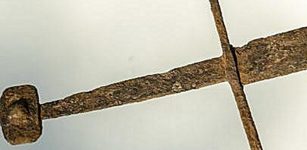 Medieval Well-Preserved Sword Discovered In A Peat Bog In Poland
Archaeology | Jun 21, 2017
Medieval Well-Preserved Sword Discovered In A Peat Bog In Poland
Archaeology | Jun 21, 2017 -
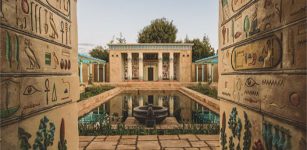 World’s First Recreated Ancient Egyptian Garden Is Now Open To The Public
News | May 17, 2022
World’s First Recreated Ancient Egyptian Garden Is Now Open To The Public
News | May 17, 2022
